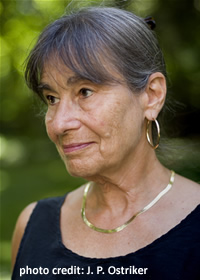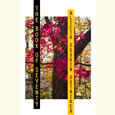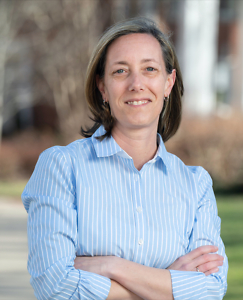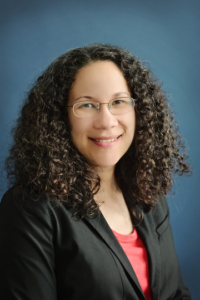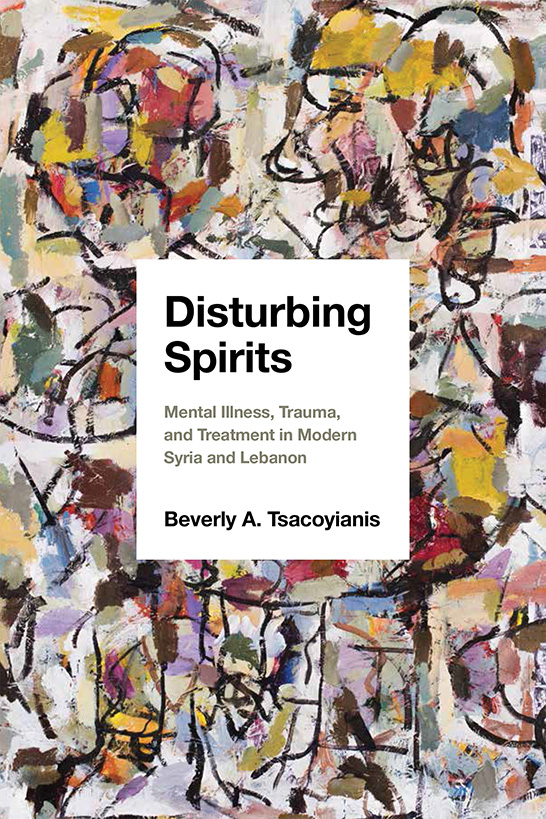Faithful Humanist
Poet Mark Jarman talks about his work, his evolving spirituality, and why the digital revolution is good for poetry
Mark Jarman, the son and grandson of ministers, describes himself as an autobiographical poet, and spiritual concerns are at the center of his life and work. Some of his best-known poetry, including the 1998 collection Questions for Ecclesiastes, which won the Lenore Marshall Poetry Prize, is expressly concerned with questions of belief and doubt. Jarman’s work often touches on the ways in which the rituals and disputes of faith were central to his early family life. In “Glossolalia,” a 1981 poem about a child speaking in tongues, he writes:
And when it is over, she
Is put away, looking
Old now, somewhere upstairs.
A hymn is sung.
A prayer said.
But it is not over.
On the drive home, Father
And Grandfather must
Swear and counter-swear, flinging
Faiths into separate heavens.
Jarman’s spiritual questions intersect with—in fact, are inseparable from—his profound regard for the natural world. Jarman was born in Kentucky and raised in Scotland and Southern California, and the landscapes of his life provide the literal ground for his poetry. His just-released collection, Bone Fires: New and Selected Poems, includes recent poems that regard the confounding violence and beauty at the center of life. In “Devereux Lagoon,” he writes:
Shiners leap ahead of diving cormorants
And killdeer cry, alarming one another.
In an egret’s beak, the catch flashes like shook foil.
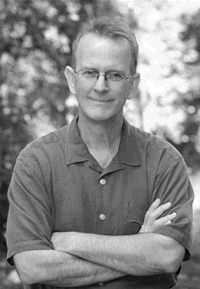 Jarman gained prominence in the 1980s as a champion of narrative and formal poetry, modes of expression that had fallen from favor among academic poets. With poet Robert McDowell, Jarman founded a magazine, The Reaper, and Story Line Press, both devoted to publishing poets working in traditional forms or, as Jarman puts it, “telling the stories of their subjects clearly.” Jarman himself has always worked in a variety of forms. In 1992 he published Iris, a book-length narrative poem about a working-class woman who finds meaning in the poetry of Robinson Jeffers—a poet who is often cited as an influence in Jarman’s own work.
Jarman gained prominence in the 1980s as a champion of narrative and formal poetry, modes of expression that had fallen from favor among academic poets. With poet Robert McDowell, Jarman founded a magazine, The Reaper, and Story Line Press, both devoted to publishing poets working in traditional forms or, as Jarman puts it, “telling the stories of their subjects clearly.” Jarman himself has always worked in a variety of forms. In 1992 he published Iris, a book-length narrative poem about a working-class woman who finds meaning in the poetry of Robinson Jeffers—a poet who is often cited as an influence in Jarman’s own work.
In addition to eleven books of poetry and criticism, Jarman has published work in The New Yorker, The Atlantic, and many literary journals. Since 1983, he has taught at Vanderbilt University, where he is Centennial Professor of English and Director of Creative Writing. He spoke with Chapter 16 by phone from his home in Nashville.
Chapter 16: How did you go about choosing what to include in the collection?
Jarman: In practical terms, I couldn’t include everything from the previous books. I had a page limit, so that meant I had to decide two things: one, what could I live without? Which poems did I have any sort of doubts about? And two, which ones altogether would form some kind of thematic whole and would seem to cohere? The new poems are not all of my new unpublished poems; they’re the ones that I thought would be best as an introduction to the poems from the previous books.
Chapter 16: They do seem to echo many of the themes from the earlier poems
Jarman: Yes, that’s why I selected them. I had a page limit, so I had to be kind of hard on myself, which is good. I decided, I’ve always been unsure of this poem or that poem, and I can’t see a way to rewrite it now. I did revise some of the early work, which a selection can allow you to do. If I couldn’t revise it and I still had doubts, I left it out.
Chapter 16: Did you think about including anything from Iris?
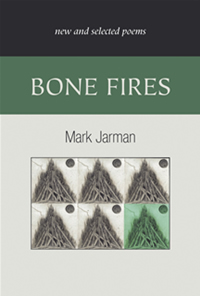 Jarman: Iris is very hard to select from. In fact, the only passage I’ve ever set off from Iris is one that I managed to lift out and republish as a poem called “Jeffers” on the Academy of American Poets site, and I did it specifically for that. As a poem for reading, usually I can give a lot of preface to it and explain a lot about it, but I just didn’t think that, as the single selection from Iris, it would do.
Jarman: Iris is very hard to select from. In fact, the only passage I’ve ever set off from Iris is one that I managed to lift out and republish as a poem called “Jeffers” on the Academy of American Poets site, and I did it specifically for that. As a poem for reading, usually I can give a lot of preface to it and explain a lot about it, but I just didn’t think that, as the single selection from Iris, it would do.
Chapter 16: What’s it like to go back through poems from thirty years ago?
Jarman: It’s a little like looking at photographs of yourself when you were thirty years younger, and thinking a couple of things—both God he was better looking then, and God what a callow youth. Why did he wear that? It’s more or less like that. But there are some good aspects to it, too. You go back and look at a poem from thirty years ago and you realize you still like it, and you also have the question, How did I manage to write that? I couldn’t do it now. That kind of thing.
Chapter 16: Were you surprised by some of the poems?
Jarman: I was surprised. I was surprised by how well some of them had held up, and I was, of course, disappointed that many of them had not. I tried to be as disinterested as possible as I looked at these things, which was easy to do when you’re thirty, thirty-five years away from a poem that was very dear to you at the time. It’s a kind of ambivalent feeling. You’re trying to remember how hard you worked on the poem, how much it meant to you at the time, and yet now realizing that you can let it go.
Chapter 16: There are some features of the older poems, like the explicit explorations of faith, that aren’t as obvious in your new work.
Jarman: That fact is that though my last few books have dealt specifically with faith, my previous four books didn’t. They dealt with my growing up as a minister’s son in southern California and in Scotland, but not necessarily with issues of faith. What I thought I would return to in the new poems was a kind of reminder to readers that I am pretty autobiographical as a poet, and my poems have not always totally concerned themselves with faith.
In oblique ways, there are references to faith and matters of faith [in the new poems]. The little poem with the title “R.S. Thomas” is about a Welsh poet who was an Anglican minister, and most of it is taken from a biography of him, but it’s sort of an expression of what his own faith was like, which was very involved with the natural world, and that seemed to be an expression of what I think mine is like. And there’s the poem “Good God,” which is one of two poems talking about the first parents. So, in a way, all these poems could be said to obliquely deal with that. They’re not deliberately taking Scripture or theological points and addressing them, or directly addressing God. But the more I look at them, the more I think they all have to do with faith, just not in the direct way that I tried even in my last book, Epistles.
Chapter 16: Do you think that’s a reflection of the way your own spirituality has evolved?
Jarman: Perhaps it is. I think that I have increasingly understood the nature of religious faith as I have written these poems over the last twenty years. I don’t think that I will ever fully understand it, but perhaps that’s what has happened.
Chapter 16: I’m wondering about one group of poems, “Dispatches from Devereux Slough”: that’s in California?
Jarman: It’s near Santa Barbara. It’s part of a huge nature preserve on the shore there in Goleta, just north of the University of California campus. Those are the most recent poems. I showed them to my publisher and she thought I should include some of them, that they would go well in this book. And I think they do. Like “R.S. Thomas,” they show a sense that I am someone who has an affectionate regard for the natural world. I do see it as the part of the Creation that most moves me, although if you look at those poems, something violent is going on in almost every single one of them. It’s not just “nature red in tooth and claw.” It’s a sense of, as R. S. Thomas says somewhere, “What kind of world has God created where life can exist only by feeding on other life?” It’s an interesting kind of thing, that the Creation is one that has embedded in it necessarily a conflict, contention.
Chapter 16: Those questions do seem central for you, whether you actually invoke the idea of a divinity or not, and it’s one aspect of your affinity with Jeffers.
Jarman: I have an affinity with Jeffers, and then a kind of aversion to Jeffers. I think Jeffers was a great Puritan poet. In fact, a Calvinist poet who, in rejecting his religious upbringing, nevertheless retained that sense that there is something bent or depraved in human beings and that never went away. He lived in one of the most beautiful places on Earth, and was disturbed to see the way human beings—and he included himself—were kind of deformations of that place. If you look at his poems, the ones in which he shows you a human being living as closely as possible to the rhythms of the natural world, that’s the human being he will most likely admire. Otherwise, they’re all just desperate losses and flaws, and he’d rather, as he says in one poem, “except for the penalties, kill a man than a hawk.”
So, since my religious roots are not that far from his, I also have to deal with that sense of the human spirit being somehow bent or fallen, and yet I don’t have, I don’t even feel, his misanthropy. In fact, I chose a passage from Jeffers for the epigraph for Iris, where he says, “Humanity has its beauty, too. You have to harden you heart to bear it. I have hardened my heart only a little.” That’s how I think about it.
So Jeffers—a very great, bad poet.
Chapter 16: A great bad poet?
Jarman: Yes, I think finally bad, in that his vision is unjust. And in some of the poems, that unjust vision produces bad writing. Other times, it produces very, very great writing. But he’s definitely a poet who’s meant something to me for a very long time. Since high school, really. I taught in Western Kentucky, at Murray State, where a number of my colleagues liked to teach his selected poems, and I had students who really knew their Jeffers, better than they’d know their T.S. Eliot—that was fascinating to me. So when I wrote Iris, I looked back for a kind of composite of the kind of student I had there. I even found the name for my character in one of my grade books.
It’s out of print, too, and I would love to see it brought back into print. There are copies at Story Line Press, which is now owned by West Chester University. They own the imprint, and they have some of Story Line’s backlog.
Chapter 16: Speaking of Story Line, how do you feel about your work to champion narrative poetry and formal poetry? Do you think your efforts were successful?
Jarman: Yes, I do think they were successful. Both these modes, if they may be called that—writing in traditional English verse, writing a poem that tells a story clearly—which had really gone out of favor by the late 70s, have been assimilated successfully, so that a young American poet, starting out, if he or she is inclined to write in traditional verse, or inclined to write narrative poetry, they won’t be told, “Don’t do that.” So, though what was called the New Formalism has been perhaps laid to rest, the effects of it, especially on younger poets, have not been.
The same is true with narrative, which is actually a wider, looser, more eclectic movement. When my friend Robert McDowell and I published our magazine The Reaper and dedicated it to narrative verse, we published mainly free verse. There was very little formal verse that got in. We were just interested in poems that were involved in telling the story of their subjects clearly. I think that’s still going on, too. Both of my colleagues in poetry at Vanderbilt—Kate Daniels, who I think is one of the finest writers of narrative poetry in the country, and Rick Hilles, who I think is, too—both pursue that as a natural inclination. It’s not something they have to apologize for.
Chapter 16: Are there other kinds of poetry that you think are undervalued now?
Jarman: I’m not sure there’s anything right now that I would say is undervalued. There’s such a variety going on right now. The Internet is so friendly to poetry, at least to the lyric poetry. You’re more likely to read a poem on a computer screen than you are to read a short story. There are so many places where the kind of work you write can find a home that I don’t know that there’s anything that’s undervalued. I don’t know that there’s a group of poets now that feel excluded, marginalized, as we thought we were back in the early 80s—people writing narrative poetry, people returning to traditional form. There are still people who don’t like that and will attack you for undermining modernism, as if it were some monolithic thing, which it was not and is not. But, nevertheless, I am rather sanguine about the range of possibilities in the contemporary scene.
Chapter 16: So the digital revolution is good for poets.
Jarman: I think the way we’ve learned to read on computer screens is good for poetry, not necessarily for prose.
Chapter 16: The Internet certainly seems to broaden the audience for poetry. There’s a poem of yours, “Coyotes,” that turns up everywhere. It ran on Andrew Sullivan’s blog just this month.
Jarman: It’s odd, isn’t it? It appeared originally inThe Atlantic, and The Atlantic is very good about posting its stuff online. And then they’ll fold it into their blog, where people will pick it up. For some reason, that particular poem got around.
Chapter 16: How does it feel to have your poem so widely read?
Jarman: It’s great. That’s what you want if you’re a poet. You want to be read. At least, I’ve always wanted to be read. Recently I was visiting a college up in Michigan and meeting with young writers who were talking about who they liked to read, and they mentioned a number of poets from the canon and their poems. I asked them which book they’d seen them in, and they’d read them all on the Internet. None of them had read these poems in a collection or a book of any kind. They’d read them all on the Internet. I said, “Well, good for poetry.”
Chapter 16: But if you’re attached to the idea of a collection as a coherent thing, it might be less than ideal.
Jarman: Wesleyan University Press, which published my book The Black Riviera twenty years ago, is now going to bring it out as an e-book. They wanted my permission and they had to rewrite the contract. As soon as they told me, I said, “Absolutely.” They did something like two editions of the book. There were two printings, maybe three printings of the book, but you just knew one of these days, when it was all sold or gone, they wouldn’t reprint it. But they’re going to do this e-book, which is great.
Chapter 16: So people are going to be walking around with e-readers filled with poetry.
Jarman: Yeah, I’ve got one. The only problem with [e-readers] is that they don’t format some poetry very well. You’ll go back and look for a collected Yeats or a collected Hardy, and they do not format them well. But the modern books—like my own press, Sarabande—they’ve begun doing e-books of their poems. They’re not doing this book, but for some other books they do e-books, and they get it all set up just right, format it, and they charge $9.99. So you can’t go wrong with them, but some of the other stuff, they’ve just scanned it in. That’s a problem, especially if you want someone to read Thomas Hardy’s “During Wind and Rain” and someone finds it on the Internet or in an e-book and thinks that it’s all justified to the left. They miss the whole sense of it’s being a column with a vertical axis. When those things are lost, that’s not good.
Chapter 16: Now we need to find a way to let authors sign e-books at readings.
Jarman: Yeah, I don’t know how you’d do that. And it completely changes the whole idea of an archive, although that’s a term that has turned up now in the digital world. There are many problems with it, but it also asks us to think about our Renaissance values—“This piece of art is the work of this specific artist, and he has signed it; therefore it is valuable.” Whereas, before the Renaissance you didn’t have that and you still had art. Nobody signed the cave paintings as Lascaux. Nobody signed the great Byzantine mosaic at San Clemente in Rome.
[This interview originally appeared on February 16, 2011.]
Mark Jarman will read from Bone Fires: New and Selected Poems at the twenty-fourth annual Southern Festival of Books, held October 12-14 at Legislative Plaza in Nashville. All events are free and open to the public.
